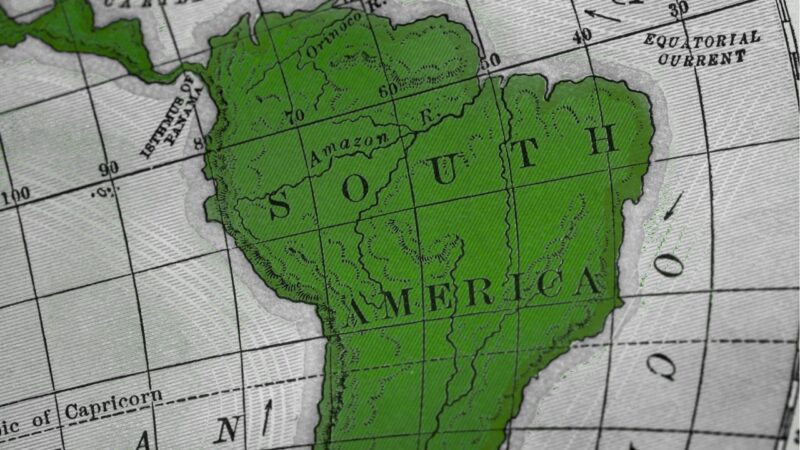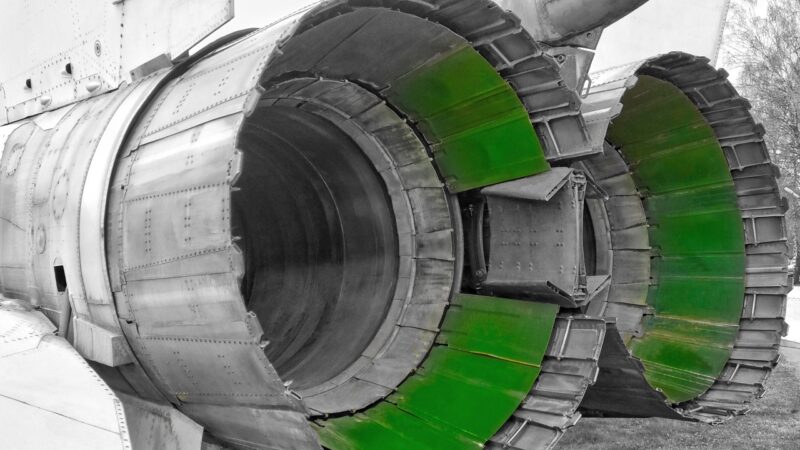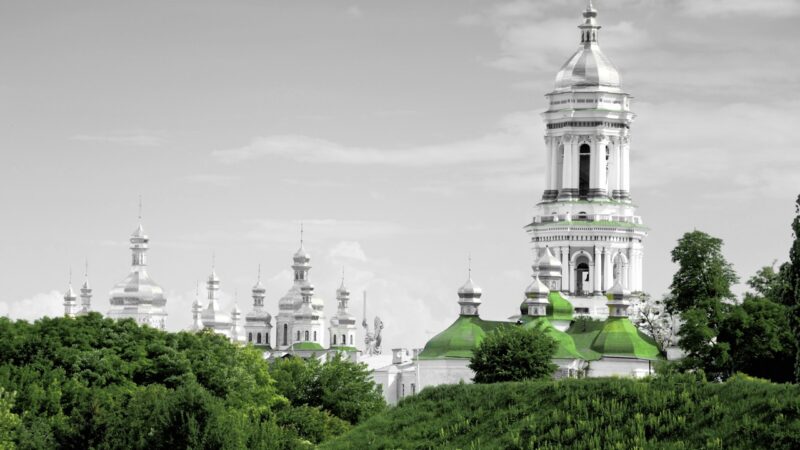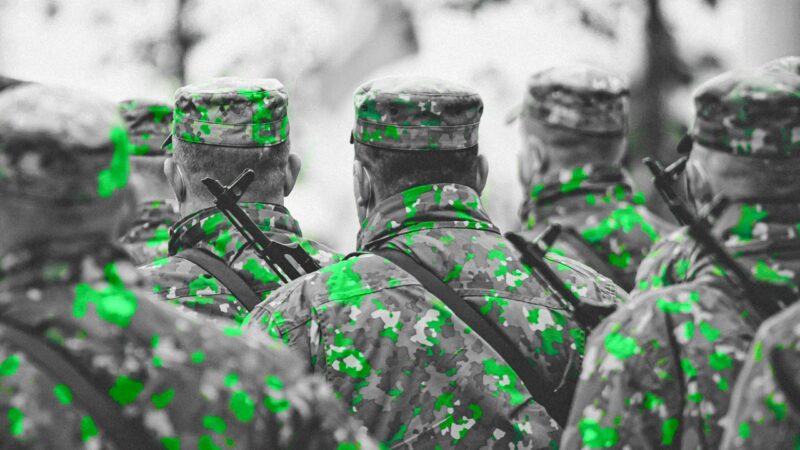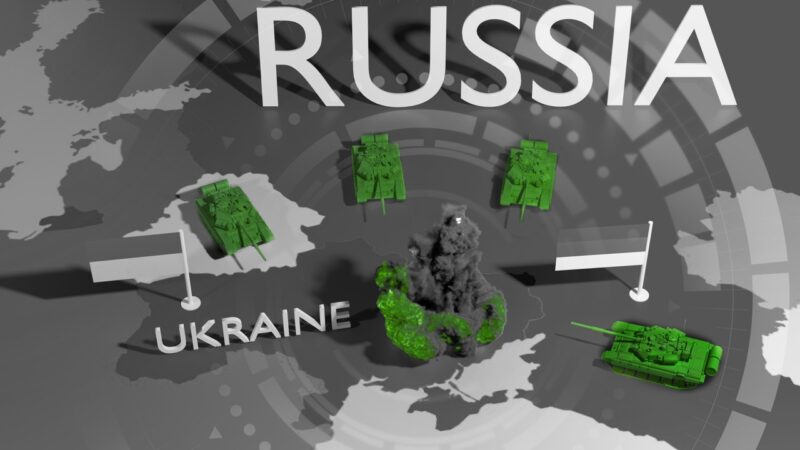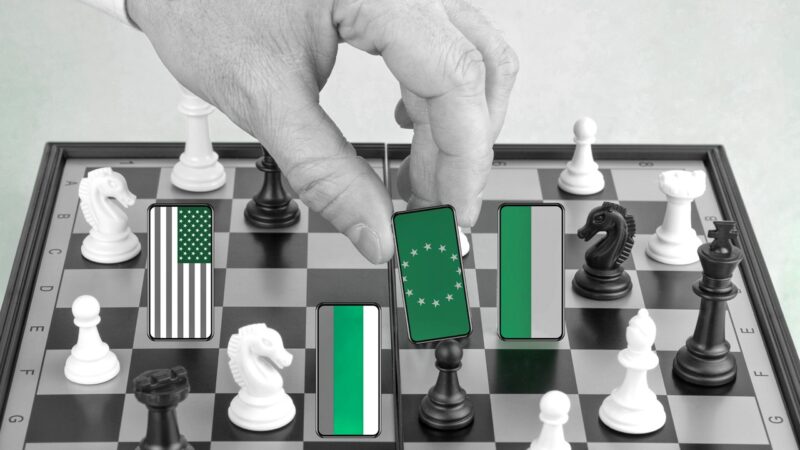Will Ukraine’s Far-Right Parties Fail Again in 2019?

The entry in 2012 of the radical nationalist and explicitly anti-Russian Svoboda (Freedom) All-Ukrainian Union into Ukraine’s parliament, the Verkhovna Rada, with a 10.44% share in the proportional part of the elections, and appearance in 2014 of new extra-parliamentary far-right groups like Pravyi (Right) Sector and the Azov Battalion, provided new fodder for Moscow’s anti-Ukrainian propaganda campaign. The first leader of Pravyi Sector, Dmytro Yarosh, was particularly singled out by Kremlin-controlled mass media as allegedly posing, despite his origins in eastern Dnipropetrovsk oblast, a deadly threat to Russophones in Ukraine. Russian TV’s frantic propaganda crusade against him made Yarosh—actually a minor figure in Ukrainian politics—into a celebrity of sorts, both in Ukraine and beyond.
The Rise and Fall of Svoboda, the Freedom Party
Yet the surprisingly weak performance of Yarosh in the May 2014 presidential elections (0.7%), and of his Pravyi Sector party in the October 2014 parliamentary elections (1.8%), took the steam out of the Kremlin’s defamation campaign. Even more astonishing (and for the Kremlin, perhaps also curiously disappointing) were the only somewhat less meagre share of Svoboda and its head, Oleh Tiahnybok, in the presidential and parliamentary elections—1.16% and 4.71%, respectively. The latter result was below the parliament’s 5% entry barrier and thus led to the disappearance of the far right’s short-lived bloc in the Verkhovna Rada, which has since seen only a few individual ultra-nationalists, who do not co-operate much with each other.
When compared to its 2012 result, Svoboda’s decline is even more surprising in view of Russia’s annexation of Crimea and the ongoing war in the Donbas, along with their social repercussions throughout Ukraine. In spite of burgeoning patriotism, increasing numbers of irregular armed groups, and spreading Russophobia within Ukraine’s population, by October 2014 Svoboda had lost more than half of its popular support (percentage-wise). In fact, it had actually lost even more overall, because voters in Crimea and in much of the Donbas—i.e., subsets of the Ukrainian electorate with especially little sympathy for Svoboda—did not take part in that election. The frustration of the far right must have been especially high in view of the fact that Svoboda and Pravyi Sector together had received more than 5% of the votes. Thus, if they had formed a united election slate, they might have been able to pass the entry barrier and thereby maintain a far-right faction in the Ukrainian parliament.
Toward a United Ultra-nationalist Front
In March 2017, it seemed that Ukraine’s radical nationalists finally learned their lesson and adopted a joint “National Manifesto.” In a solemn ceremony at Kyiv’s historic House of Teachers (the building in which the ukase establishing the Ukrainian National Republic was signed a century earlier), the heads of the three main parties—Svoboda’s Oleh Tiahnybok, Pravyi Sector’s Andriy Tarasenko, and the National Corps’ Andriy Biletsky—signed a common program document. Among its provisions was a demand to create a Baltic–Black Sea alliance of East European countries, as well as to re-establish Ukraine as a nuclear weapons state. This new coalition explicitly united the two parties that had run separately in the two 2014 national elections.
Until recently the alliance also included the National Corps, a dynamic new party that had grown out of the Azov movement and continued the tradition of the pre-Euromaidan racist groupuscules “Patriot of Ukraine” and the Social[ist]-National[ist] Assembly (headed by Biletsky until 2015). Added to these three, the alliance was also joined by three additional minor far-right groups—the Congress of Ukrainian Nationalists, Organization of Ukrainian Nationalists, and C14, a notorious neo-Nazi grouplet. Conspicuously, though, absent at the March 2017 unification meeting was another notable nationalist group, the Yarosh Statehood Initiative (the NGO behind the Ukrainian Volunteer Army, or UDA)—a split-off from Pravyi Sector that did not sign the National Manifesto. Yarosh’s pointed non-engagement turned out be a harbinger of things to come.
Throughout 2018, leaders and activists of Ukraine’s far right strove to establish a common strategy for the 2019 presidential and parliamentary elections. Much of their public rhetoric was about the need for ultra-nationalist groups to campaign jointly and run on a united platform. A thorny issue persisted, though: which of their two most popular leaders, Tiahnybok or Biletsky, would be the far right’s single presidential candidate. Tiahnybok is a veteran Ukrainian politician from Galicia (Western Ukraine; b 1968), who had prominently participated in the 1990 student, 2004 Orange, and 2014 Maidan revolutions; until 2014, he also accumulated ten years of experience as a deputy to the Verkhovna Rada. In contrast, Biletsky is from Kharkiv (Eastern Ukraine; b 1979), did not participate in politics until after the Euromaidan, and rose to prominence only in 2014 as commander of the Azov volunteer battalion; this gave him a victory in Kyiv’s single-member Obolon constituency, bringing Biletsky into the Verkhovna Rada in the same election that lost Tiahnybok his seat. While Biletsky has little political experience, within the united ultra-nationalist camp he apparently assumes a role equal or superior to that of Tiahnybok.
In November 2018 it appeared that Ukraine’s far right had seemingly found a single presidential candidate they could jointly stand behind. Skirting around the duelling leaders Tiahnybok and Biletsky, the bloc put forward a third prominent politician, Ruslan Koshulynsky (b 1969), as its candidate for President of Ukraine. A Western-Ukrainian-born leader of Svoboda (like Tiahnybok), Koshulynsky had been a Deputy Speaker of the Verkhovna Rada in 2012–14. He had acquired national recognition and a good reputation in that function and as a volunteer soldier in the Donbas war. Koshulynsky thus seemed like a good choice.
It soon became apparent, however, that for one reason or another, the far-right organizations that had signed the 2017 National Manifesto failed to consult Biletsky’s National Corps sufficiently, or at all, on their nomination of Koshulynsky. Svoboda and its allies, on the one side, and the National Corps, on the other, have since accused each other of sabotaging the coordination of Koshulynskyi’s nomination.
In any case, neither the apparent breakup of the 2017 far-right coalition nor Yarosh’s public support of Koshulynsky as a presidential candidate are of much political importance in the big electoral picture. In fact, a weak performance by Koshulynsky in this election could turn into a public relations disaster for the far-right movement in Ukraine. According to an opinion poll released by the reputable Razumkov Center on 20 February 2019, Koshulynsky is supported by only 0.9% of decided voters. If this was the actual electoral result, it would be lower than the already embarrassing 1.16% that Tiahnybok received in the 2014 presidential election. This would be even more stunning because Koshulynsky—unlike Tiahnybok, who in 2014 ran against Yarosh—does not have a competitor on the far-right flank. Indeed, neither Biletsky nor Yarosh nor any other prominent ultra-nationalists are running in this presidential election.
Looking ahead, by far the most important aspect of the current tensions between the National Corps and other Ukrainian ultra-nationalist groups is that they could run separately in the upcoming parliamentary elections in October 2019. Splitting their vote in such a manner is likely to mean a reprise of the far right’s fiasco of 2014. In fact, it is not entirely clear that even a fully united far right slate would be able to pass the 5% threshold. In the words of prominent Kyiv political analyst Volodymyr Fesenko, it is because:
Furthermore, according to the Vienna-based Ukrainian political commentator Anton Shekhovtsov:
[The far right now has] little chance of getting into the Rada because, above all, Ukraine’s political system is again extremely polarized (as was the case in the 1990s and early 2000s). The conflict in the political center is currently so intense that for all peripheral parties, there is scant likelihood of joining the fray at the center and thereby participating in the national debate. In some way, the situation with Svoboda and the National Corps is similar to that of small liberal parties like the Democratic Alliance or People’s Power. They have no chance, either—not so much because they aren’t uniting but because the current battlefield at the system’s center is comprised of much stronger political players. Moreover, it is important to remember that Svoboda managed to enter the Rada in 2012 thanks to the help of President Viktor Yanukovych. But today nobody needs the right-wing radicals, apart from certain business projects that require their services for raiding attacks or similar actions.The Ambitious National Corps
In the above-mentioned Razumkov Center poll concerning the parliamentary elections,as of February 2019 the aggregate total of decided voters supporting Svoboda (1.4%), the National Corps (0.2%), the Yarosh Statehood Initiative (0.1%), and Pravyi Sector (0.0%) was just 1.7%. To be sure, Ukraine’s far right has sometimes performed much better in real elections than in pre-electoral surveys. Even so, the current measure of support for the far right would have to triple during the actual voting in order for a united slate to pass the 5% threshold for presence in the Verkhovna Rada of Ukraine.
In spite of the sobering polling results, Biletskyi still seems to be planning a separate slate for his party in the upcoming fall elections. A representative of the National Corps reportedly asserted in November 2018 that his organization’s “prospects and human resources are much larger than those of all the other signatories [of the far right’s 2017 National Manifesto] combined.” If President Poroshenko is not reelected in April 2019 and a less militantly patriotic candidate becomes president of Ukraine, a competition for far-right votes between the National Corps, on the one hand, and a united list of the remaining parties, on the other, could become significant. In such a case, nationalist voters currently attracted to the incumbent could decide to support the ultra-nationalists in the fall elections. This could provide the far right with an opportunity to regain a faction in the next Verkhovna Rada convocation. However, under such favourable conditions if Biletskyi’s National Corps was to run an effective campaign, Svoboda’s slate—currently the option with the best prospects—could again miss the 5% barrier in October 2019, as it did in October 2014.
Of course, much of this is speculation at the present time. Ukrainian party politics and national elections are notoriously unpredictable. The first two months of 2019 so far—and the meteoric rise of Volodymyr Zelensky within only a few weeks—have shown how quickly and radically the “correlation of forces” (a prime term of Soviet political analysis that harks back to Marx, and to Hegel before him) can change in post-Soviet Ukrainian domestic affairs. Moreover, it is likely that in one way or another, Moscow will try to leave its imprint on at least the parliamentary elections in October. Such attempts may not necessarily be successful in terms of serving the Kremlin’s interest. Yet, they could change public opinion and the party-political constellation, perhaps even to the advantage of the far right. Nevertheless, as of late February 2019 it appears that Ukraine’s far right is likely to perform calamitously in both the spring presidential and autumn parliamentary elections.
ANDREAS UMLAND is the Senior Non-Resident Fellow at the Center for European Security of the Institute of International Relations in Prague, Principal Researcher at the Institute for Euro-Atlantic Cooperation in Kyiv, and General Editor of the ibidem-Verlag book series “Soviet and Post-Soviet Politics and Society” distributed by Columbia University Press.
